Horned Larks are called Shore Larks in Europe. This one struck an arrogant pose.
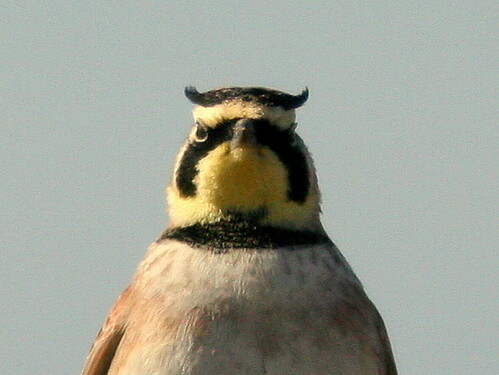
I would either sit on the front steps or park the car along the curb on one of the streets in the undeveloped grassland, focus my camera on one of the stakes and simply wait for a bird to fly in and perch. Early in the spring, the visitor would commonly be a Horned Lark.
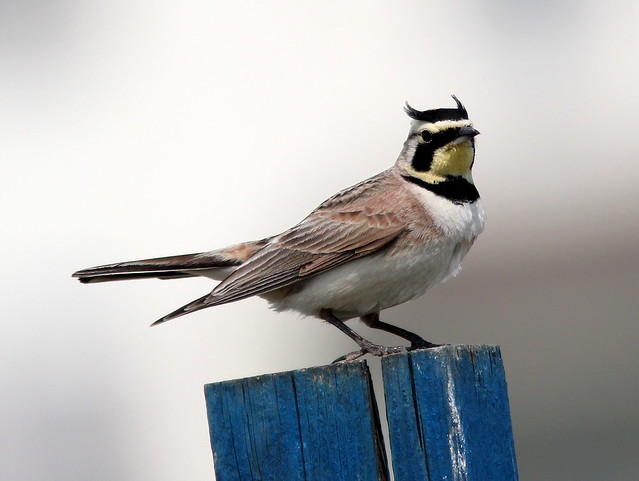

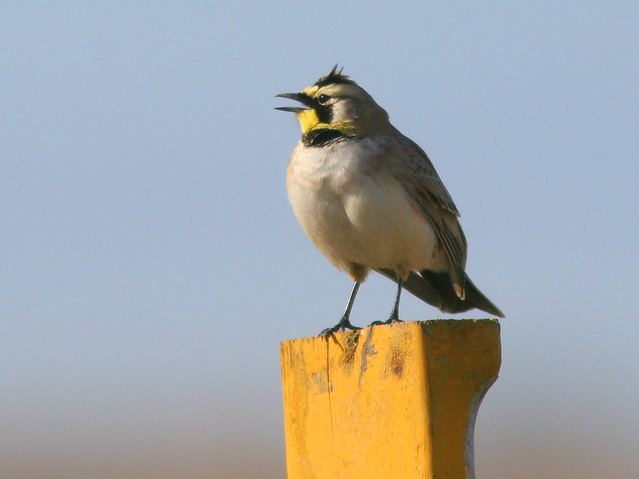

Males hover in courtship flights over the females, often hidden in the grass. They do not receive critical acclaim as songsters, as do the Skylarks, but I loved to hear their high-pitched music in the morning, beginning before sunrise. They also have a distinctive, if subdued flight song. Listen at this link
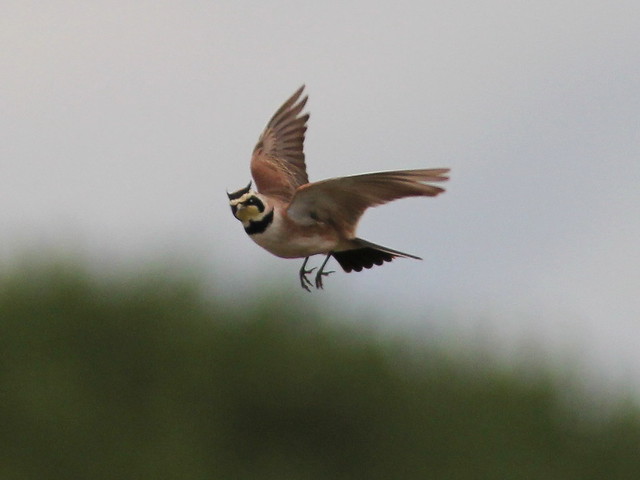

The coloration of females is less pronounced, and they lack the characteristic feather head tufts of the males, the hallmark of their species.

The "horns" are not always raised, as is the case in this adult male. This and the amount of yellow on the face, throat and upper chest varies geographically, being generally brighter and more extensive in the northeastern USA than here in the plains of Illinois. Northern birds are larger and darker.
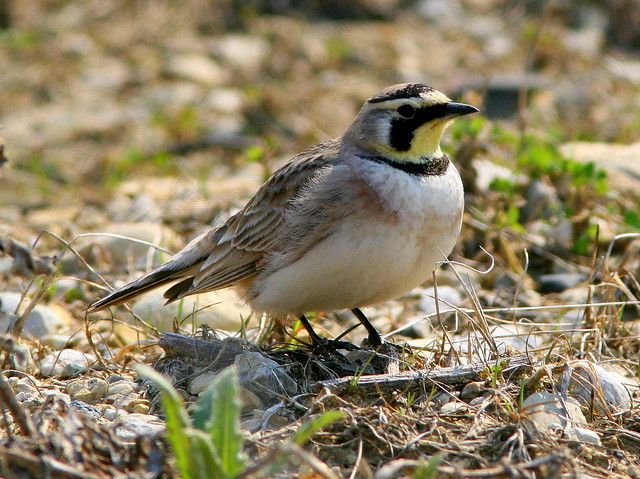
Their brown backs make them almost invisible in the grasses. Larks may resemble sparrows, but unlike sparrows, all larks walk rather than hop. This male shows almost no yellow color.
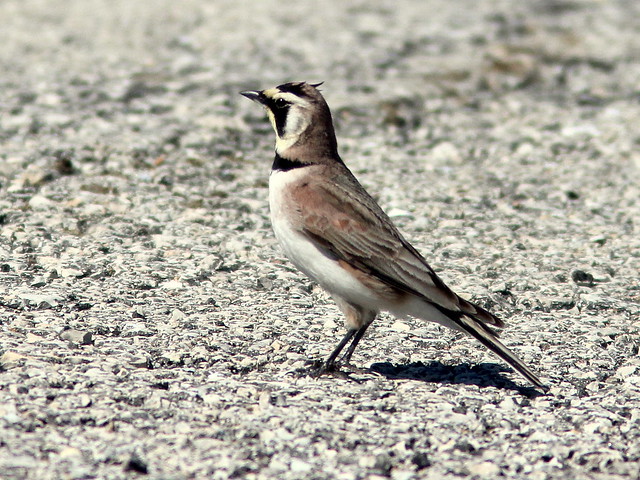
HI Ken All these shots are fastastic. I have never seen this bird, I had hoped to when i when to Morocco. In the frst shot, faace on, he looks a bit angry, great flight shots and I like the light in the one where the Lark is sitting on the yellow post.
ReplyDeletewow! fabulous shots of a very handsome bird!
ReplyDeleteI have never seen this beautiful bird before Ken, and your photos are incredible! How sad about the development in its nesting area near you. Our area too :(
ReplyDeleteWonderful shots...I remember seeing and learning about this bird when we went to a birding event in Burns Oregon years ago. We were there to see the dance of the sage grouse and so the other birds were kind of overshadowed. In any case, I didn't even own a camera at that time, so....
ReplyDeleteProbably I've seen this bird since then and didn't recognize it. I will watch now that you have reminded me.
Awesome shots of the Horned Lark, Ken!
ReplyDeleteThey are beautiful. Boom & Gary of the Vermilon River, Canada.
ReplyDeleteIt truly os a shame that their breeding spot has been destroyed. Handsome birds!
ReplyDeleteFabulous series of this beautiful bird. It's so sad that their habitat was destroyed.
ReplyDeleteWow....I've not seen one of these in real time. Hope to someday tho. In the meantime I enjoy your photo captures!!! They almost are reminiscent of a viper. But much cuter!!!
ReplyDeleteThanks for linking up this weekend at the Bird D'Pot!! Have a great week ahead.
A great serie of photos!
ReplyDeleteWhat a beautiful bird! You got a lot of very nice shots.
ReplyDelete